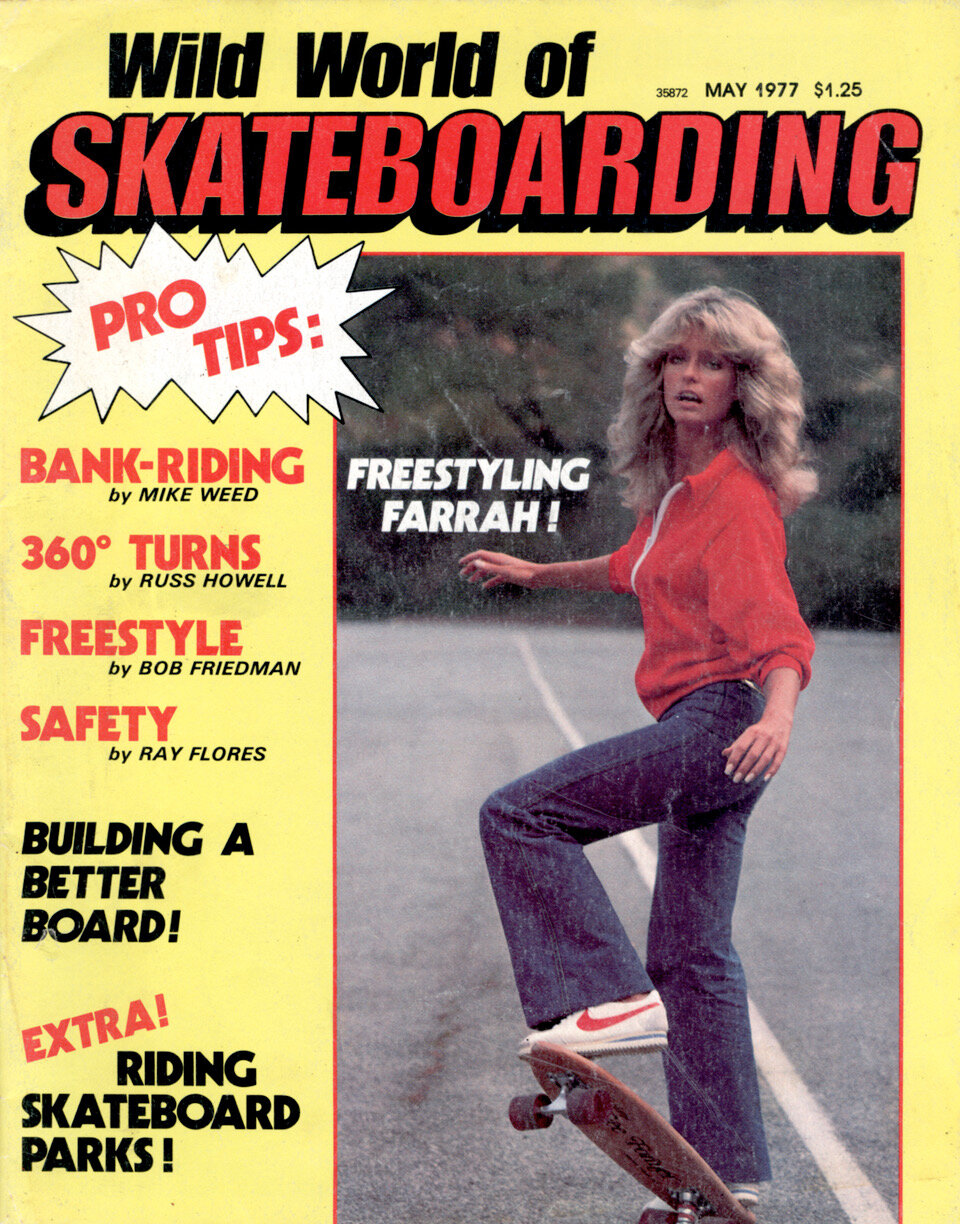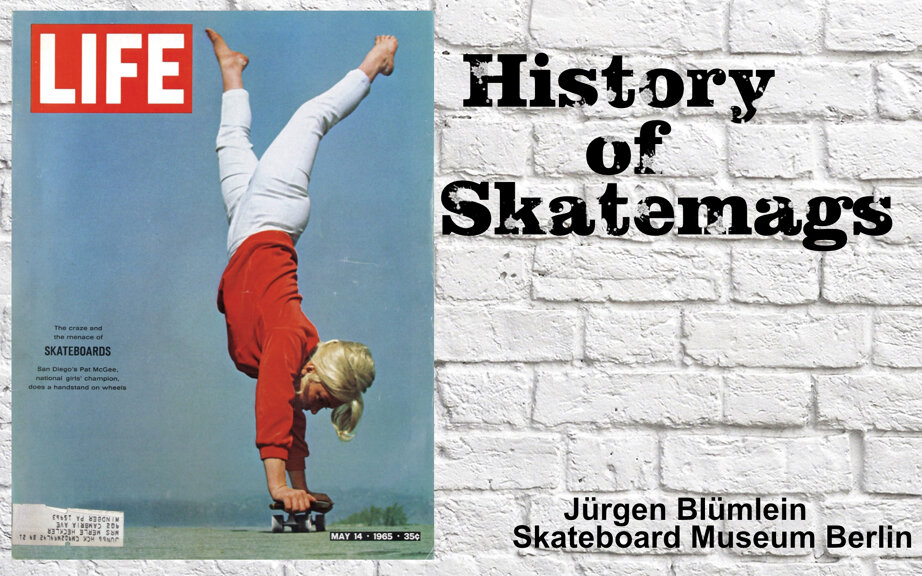
History of Skatemags
Juergen Bluemlein
July 2022
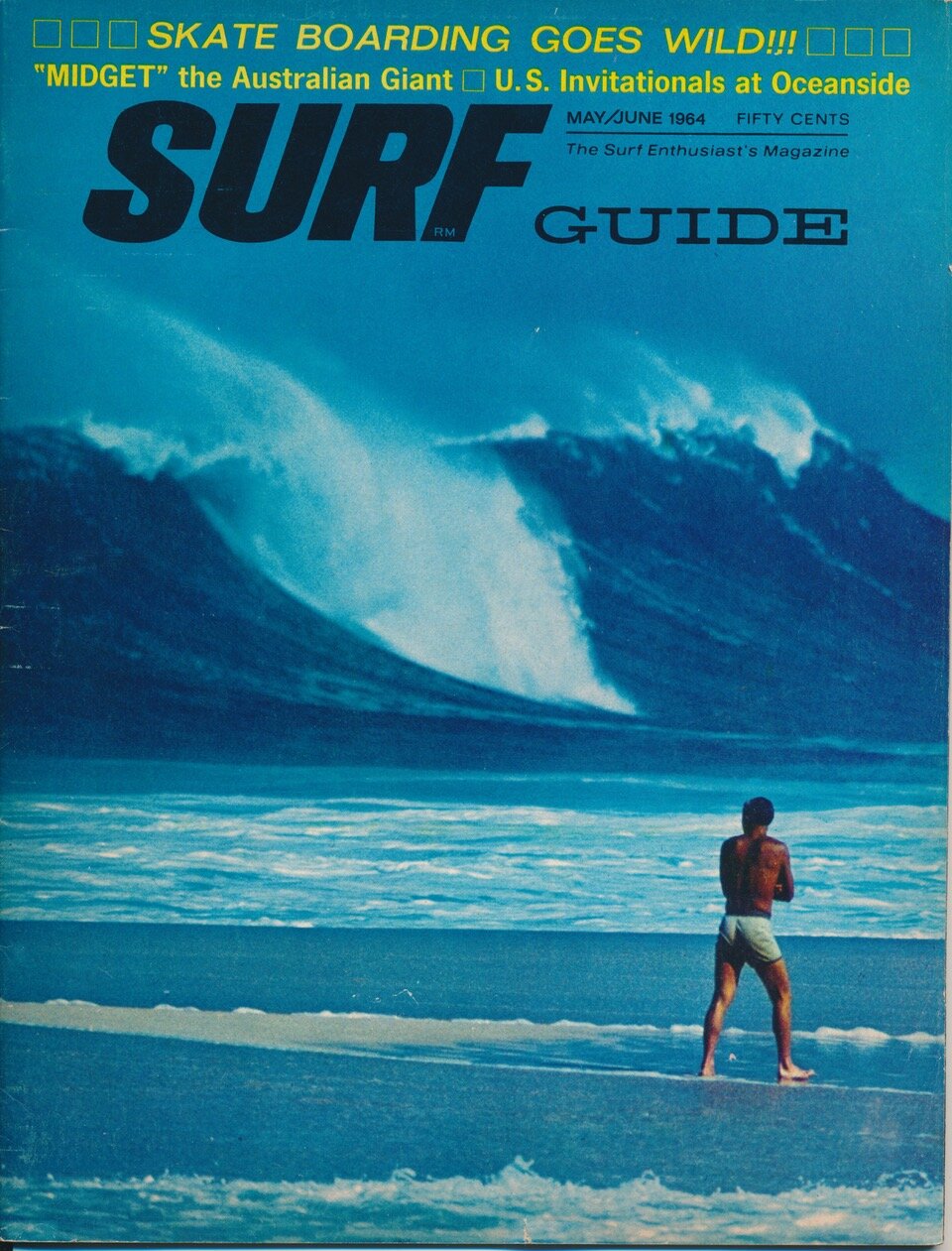
The SURFING Guide magazine in May 1964 brought one of the first articles about sidewalk surfing with the great headline on the cover “SKATE BOARDING GOES WILD!!!
The first cover featured Dave Hilton of the Hobie Surfer Team, who was actually an ancestor of our beloved Paris Hilton.

The first wave of skateboarding was pushed by surfers as sidewalk surfing was more and more popular at that time as it was somewhere between a fun toy and training equipment for them. When the first boom in 1964 produced millions of enthusiastic skateboard fans, the editor of Surfer publications John Severson decided to give skateboarding its own and decided to publish the first independent skateboard magazine: “The Quarterly SKATEBOARDER”. The first cover featured Dave Hilton of the Hobie Surfer Team, who was actually an ancestor of our beloved Paris Hilton.
The conservative magazine even managed that skateboarding was completely banned in some cities in the United States.
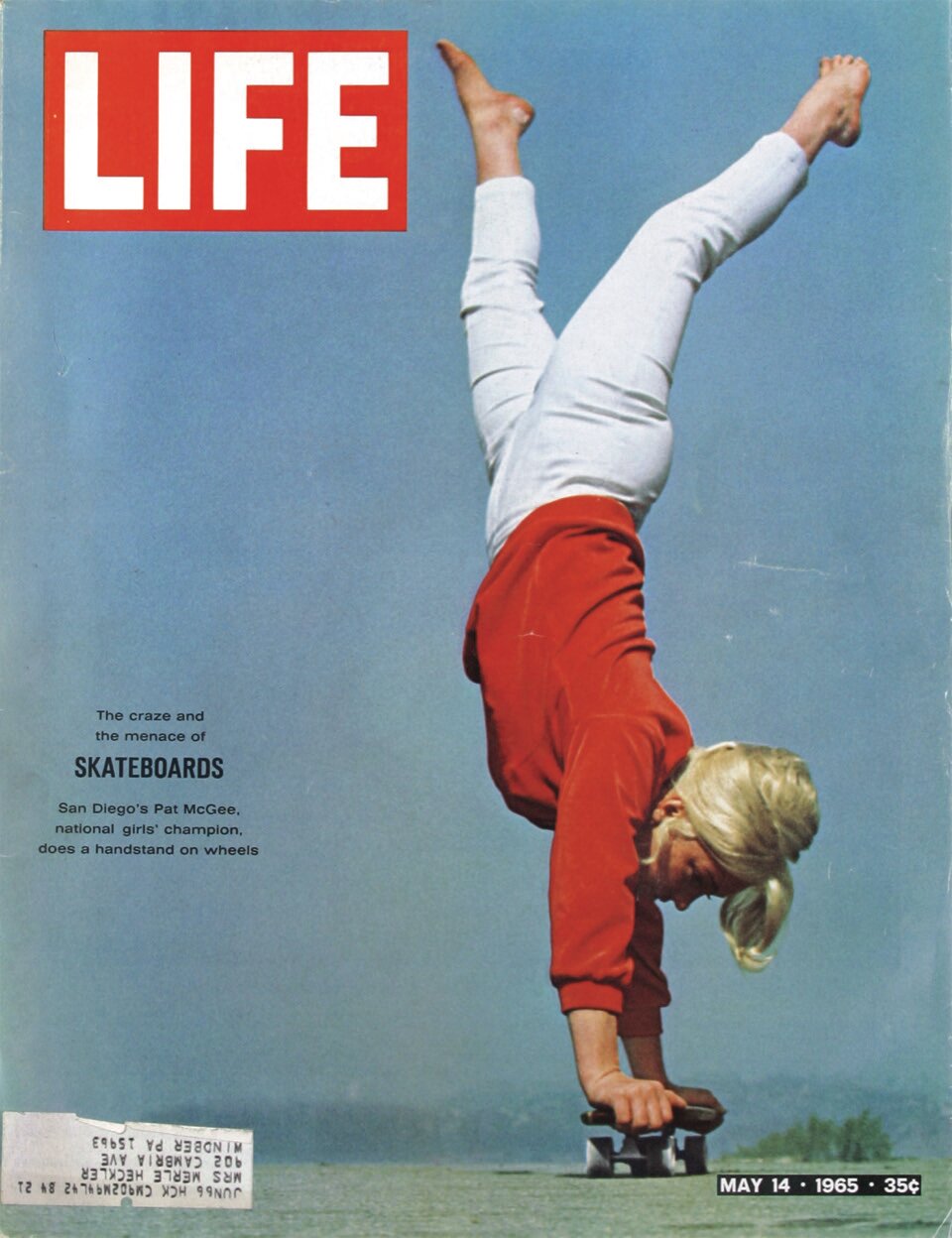
Even then, publisher Severson warned that skateboarding should not become a sport for rebels. He was facing an early end in 1965. Despite the general public’s opinion that skateboarding was too dangerous, Patty McGee graced the cover of LIFE magazine – but with the underline: “The craze and menace of skateboarding” in the same year. The conservative magazine even managed that skateboarding was completely banned in some cities in the United States. At least, Patty was the fist woman on a skateboard magazine cover and along with that came TV fame!
With the introduction of the urethane wheel in 1973, the skateboarding experience did get new momentum and started the secound wave. After a short time, millions of people were standing on the skateboard again. In 1975 Steve Pezman, the new publisher of SURFER magazine, brought the “Quarterly Skateboarder” back to life and simply called it “SkateBoarder”. The focus was entirely on the Californian scene and the publication was not only in color but also it became thicker and thicker. The number of pages in skateboard magazines have always been a good indicator of the popularity of the sport. The record number of pages was reached in 1978 and it’s hard to believe but at the time, it was the most popular magazine for 7-11 year olds in the United States.
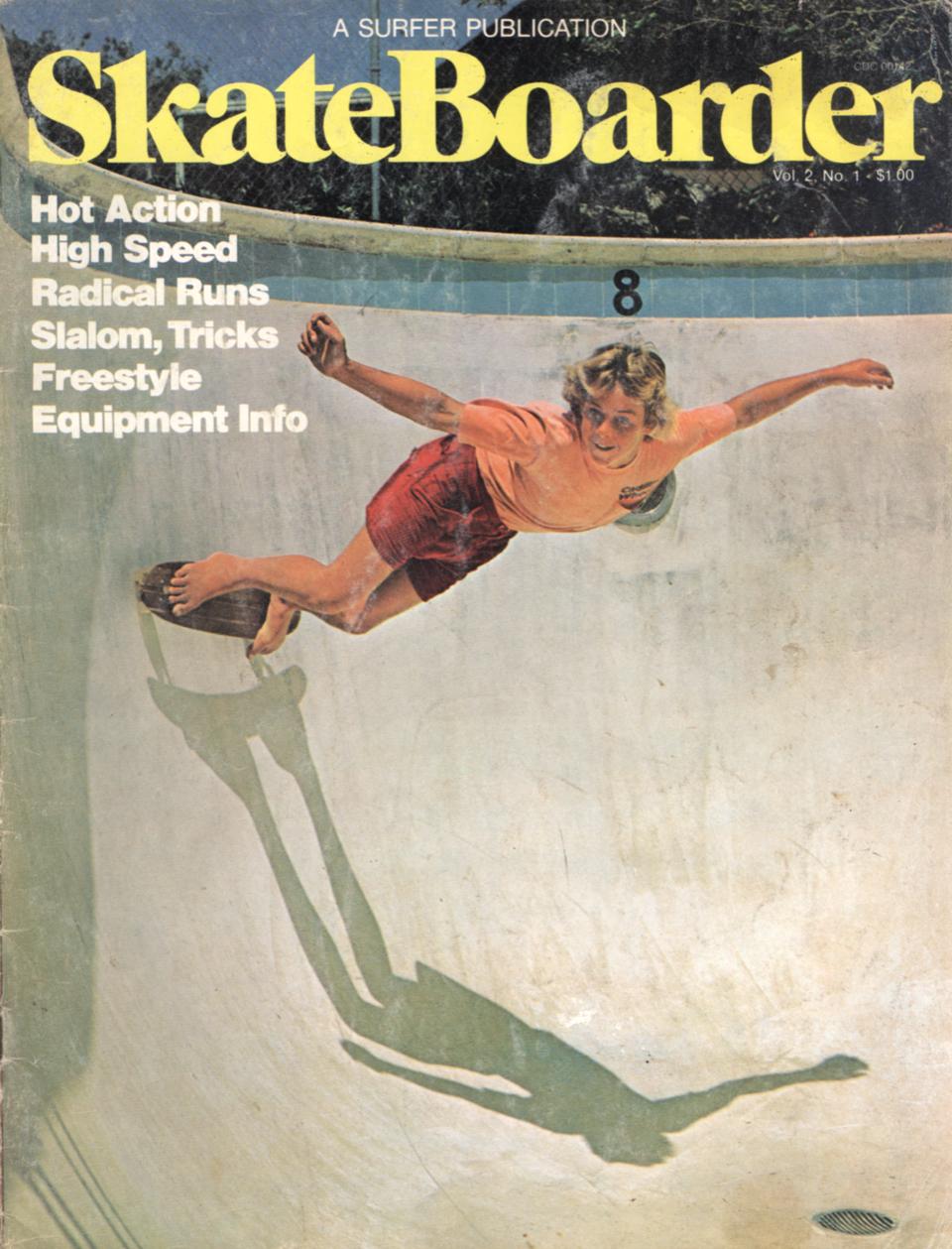
The number of pages in skateboard magazines have always been a good indicator of the popularity of the sport.
In 1980 the popularty of skateboarding faded again and got more underground and punk. ”SkateBoarder’ announced that from now on they would be called “Action Now” in order to devote themselves also to other actions sports like BMX, cycling, surfing and roller skating and even horse riding as well. For many skateboarders this was obviously unacceptable. It did not come as a surprise that the magazine was discontinued two years later.
For many skateboarders this was obviously unacceptable.

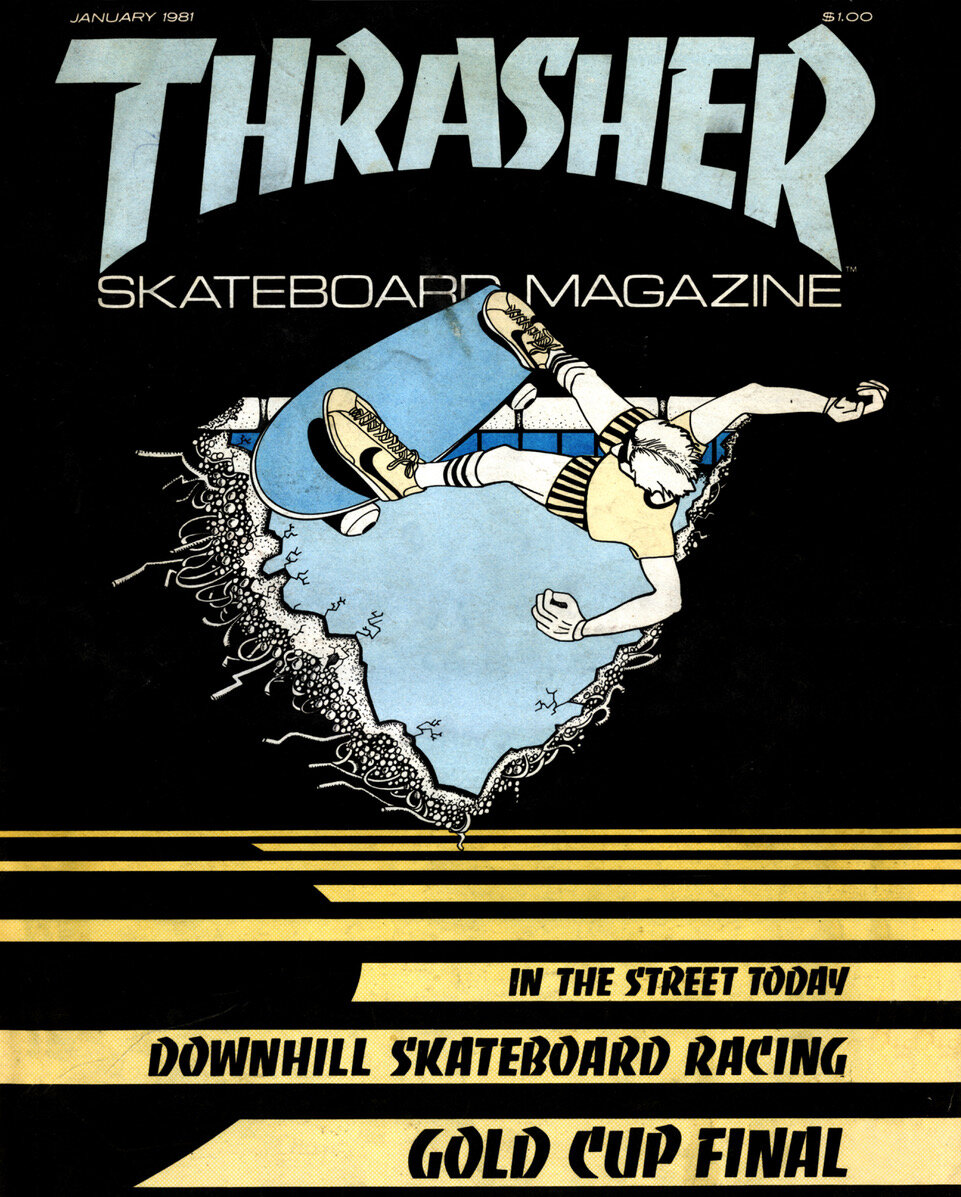
When punk and outlaw culture flowed more and more into skateboarding at the beginning of the 80s, not only did the image of skaters change but also that one of the magazines. The first “Thrasher” from 1981 had a rough look and was printed on newspaper paper. High gloss was history and articles like “Skate and Destroy” reflected the attitude of the hard core skaters and was the offical magazine of Indy trucks.
This caused an uproar and TWS was insulted as “right-wing” and “conservative”.
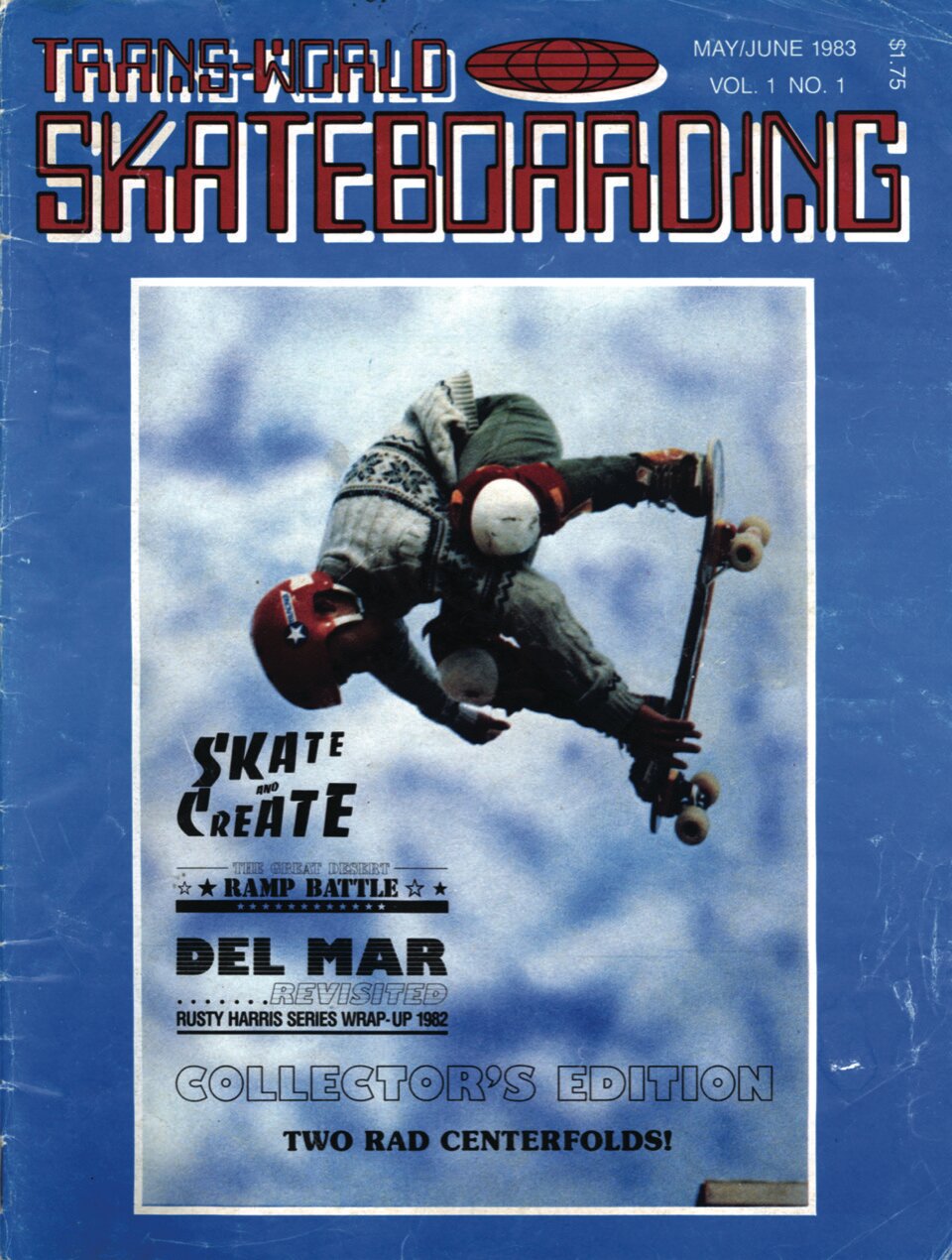
“TRANSWORLD Skateboard Magazine” published by Larry Balma who was the founder of Tracker Trucks jumped on board in 1983 and published the first issue with the title “Skate and Create” in response to Thrasher. This caused an uproar and TWS was insulted as “right-wing” and “conservative”. A few years later, the “PowerEdge” came on the market – a mixture of TWS and Thrasher with a view of the bigger picture outside the US.
In the early 90s, SLAP joined the market and of course the most controversial magazine of all time: Big Brother. In 1997 it was bought by Hustler publisher Larry Flint and unexpectedly discontinued in 2004. In the same year, some founders of TWS, which was bought by AOL in 1997, broke up due to a dispute and brought “The Skateboard Mag” onto the market.

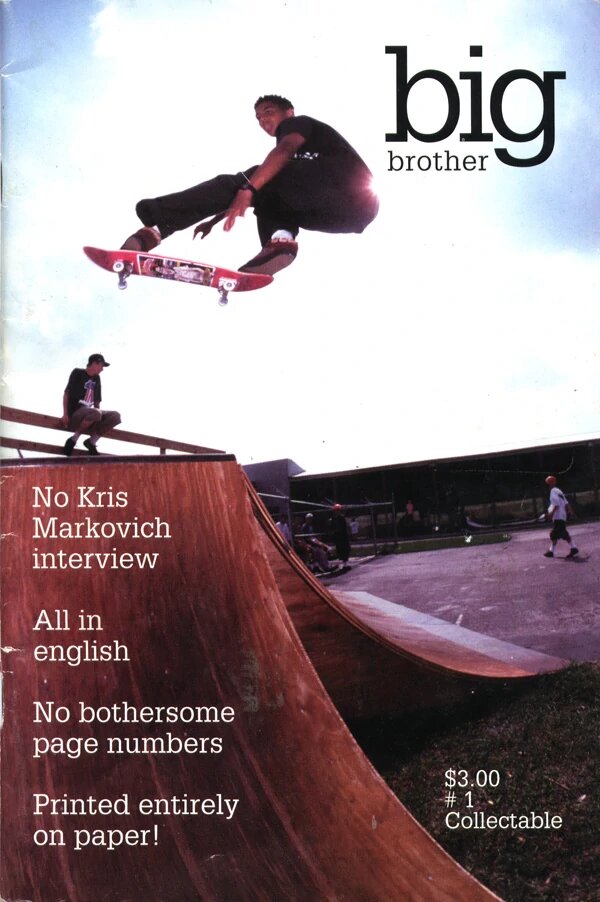
The most controversial magazine of all time: Big Brother
The focus was more shifting to the internet. In 2004, the world was introduced to a new concept of connection and information – Mark Zuckerberg started his social network Facebook and just three years later Steve Jobs introduced the iphone. Now people were carrying a digital mobile device with them. Anytime. Equipped with a camera, these new digital devices chanched the way how people were consuming news. With apps like Instagram and youtube, news happend from now on in real time and not monthly as with magazines.
Since the dawn of social media countless magzines like Slap, Kingpin, Monster, The Skatboard Mag and even TWS were discontinued. Some are still around in the digital world as a blog or forum but Thrasher kinda is the last magazine dinosaur still standing! But also stronger and more popular then ever.
Especially for us as “historians” they are contemporary witnesses without loss of memory and represent an almost inexhaustible treasure trove.


A new trend was born that the magazines in times of social media like Solo, Soma, Grey, Irregular and Free – to name a few – are for free now and you can pick them up at your local skate shop.
Let’s hope that, despite the pressure of internet and social media, the skateboard brands will be willing to run advertisements in printed magazines. Without funding, it will be hard in the future to continue the amazing and important work of many creative people.
We all know how short-lived a post or story on Instagram, Snapchat or TiKToK is compared to a great researched article or interiew with photos. We can just hope that magazines will live forever! Especially for us “historians”, they are contemporary witnesses without loss of memory and represent an almost inexhaustible treasure trove.
Luckily, we have passionate skateboarders like Kevin Marks founder of Lookback library who is dedicated to preserving the history of skateboard magazines by installing public libraries at local skate shops and other venues.
